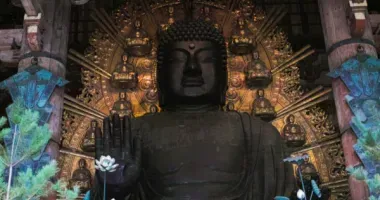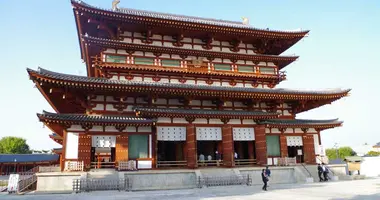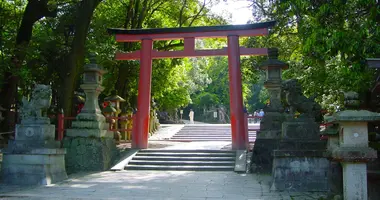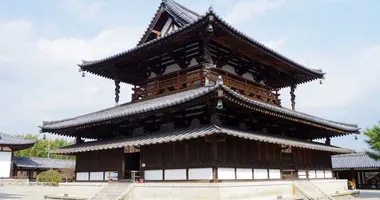Nigatsudo & Sangatsudo Temples: Hidden Gems of Nara's Todaiji Complex
- Published on : 29/05/2024
- by : Japan Experience
- Youtube
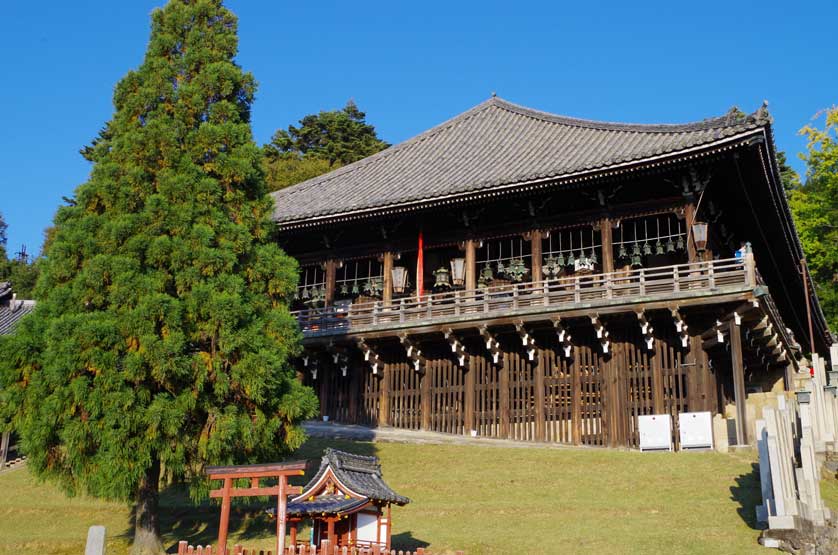
Nigatsu-do a sub-temple of Todaiji in Nara
Nestled within the sprawling grounds of Todaiji Temple in Nara, the Nigatsudo and Sangatsudo temples stand as testaments to Japan's rich Buddhist heritage. These sub-temples, often overlooked by visitors focused on Todaiji's Great Buddha Hall, offer a unique glimpse into ancient Japanese religious practices and architectural mastery. Dating back to the Nara Period, these temples have witnessed over 1,200 years of history, surviving fires, reconstructions, and the passage of time. As you explore these hidden gems, you'll discover breathtaking views, awe-inspiring ceremonies, and a collection of priceless Buddhist art that rivals any in Japan. Whether you're a history enthusiast, a spiritual seeker, or simply a curious traveler, Nigatsudo and Sangatsudo offer an unforgettable journey into the heart of Japanese culture and spirituality.
Historical significance and architectural features
The Nigatsudo and Sangatsudo temples are integral parts of the Todaiji complex, each with its own unique history and architectural significance. Nigatsudo, also known as the Hall of the Second Month, was originally constructed in 752 during the Nara Period. The current structure, however, dates back to 1669, having been rebuilt after a fire during the Edo Period. Despite its reconstruction, Nigatsudo retains its original architectural style and is designated as a National Treasure.
Sangatsudo, or the Hall of the Third Month, is considered the oldest building in the Todaiji precinct. Founded in 733 by the priest Roben, the first abbot of Todaiji, it has remarkably remained intact over the centuries, with only the Raido (chapel) added in 1200. The temple's longevity is a testament to the exceptional craftsmanship of ancient Japanese builders. Both structures showcase the classic elements of Japanese temple architecture, including raised wooden platforms, intricate bracketing systems, and gently curved rooflines that seem to float above the surrounding landscape.
Nigatsudo Temple: Home of the Omizutori ceremony
Nigatsudo is perhaps best known as the venue for the ancient Omizutori ceremony, a spectacular fire and water rite that has been performed annually for over 1,250 years. The ceremony, officially called Shunie, takes place from March 1st to March 14th, with the climax occurring on the night of March 12th. During this event, monks carry massive flaming torches to the temple's balcony, showering sparks upon the gathered crowd below. It's believed that these embers bestow good fortune for the coming year.
The origin of Omizutori is steeped in legend. One story tells of the monk Jitchu, who witnessed celestial beings performing a purification ritual in the mountains. Determined to bring this divine ceremony to the human world, Jitchu established the Shunie at Nigatsudo. The ceremony's name, Omizutori, meaning "water drawing," comes from the ritual's culmination when sacred water is drawn from a well beneath the temple at 2 am on March 15th. This water, believed to flow only once a year, is said to have healing properties. The Omizutori ceremony is a breathtaking spectacle that attracts thousands of visitors each year, offering a rare glimpse into Japan's living Buddhist traditions.
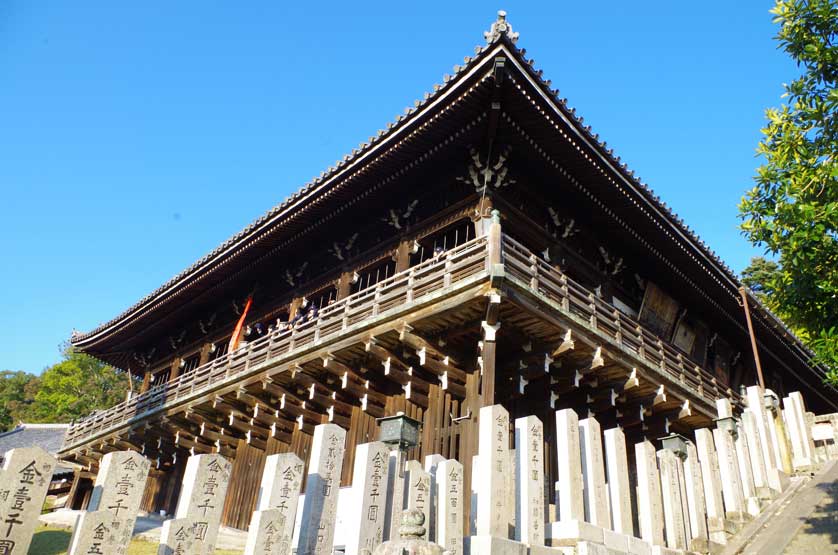
Nigatsudo Temple, Todaiji, Nara
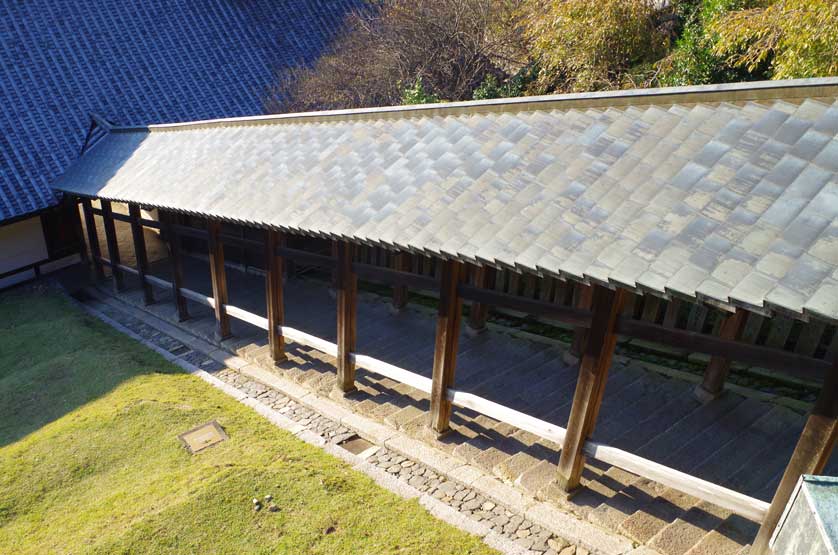
Nigatsudo covered walkway
Sangatsudo Temple: Ancient statues and Buddhist art
While Nigatsudo is renowned for its ceremony, Sangatsudo is a treasure trove of ancient Buddhist art. The temple houses an impressive collection of statues, many of which are designated as National Treasures. The centerpiece is a 3.6-meter-tall dry lacquer image of Fukukenjaku Kannon, a form of the Bodhisattva of Compassion. This imposing figure is surrounded by 14 other statues, including clay images of Nikko-Bosatsu and Gakko-Bosatsu, all of which are National Treasures.
The artistic wealth of Sangatsudo extends beyond these central figures. The temple also houses dry lacquer images of Bonten (Brahma) and Taishakuten (Indra), as well as the Four Heavenly Guardians, all designated as National Treasures. To the right of Bonten stands a wooden statue of Fudo-Myo-o, while to the left is Jizo-Bosatsu, both Important Cultural Properties. The artistry is further exemplified by two 3-meter-tall dry lacquer Deva Kings placed in front of the main platform. These statues, with their intricate details and expressive features, offer visitors a rare opportunity to witness the pinnacle of Japanese Buddhist sculpture from over a millennium ago.
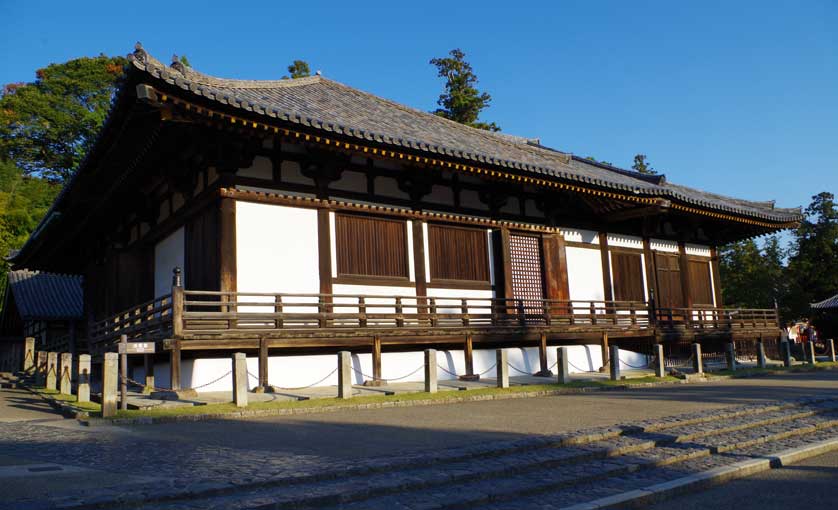
Hokke-do (Sangatsu-do)
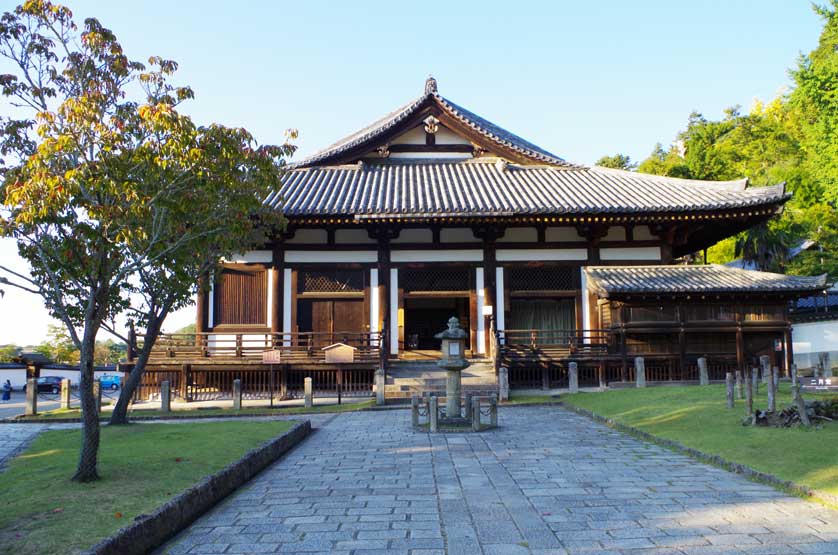
Hokke-do (Sangatsu-do)
Scenic views and natural surroundings
Beyond their historical and artistic significance, Nigatsudo and Sangatsudo offer some of the most breathtaking views in Nara. Perched on a hillside, Nigatsudo's terrace provides a panoramic vista that stretches across the ancient capital. From this vantage point, visitors can gaze out over the sprawling roof of Todaiji's Great Buddha Hall, the five-story pagoda of Kofukuji Temple, and the expanse of Nara Park. On clear days, the view extends as far as Mount Ikoma on the border of Osaka and Nara prefectures.
The journey to the temples is equally picturesque. Visitors can choose between two approaches: a path leading up cobbled steps flanked by ancient stone walls, or a covered wooden walkway that offers protection from the elements. As you ascend, you'll find yourself surrounded by the lush greenery of Wakakusayama, creating a serene atmosphere that feels worlds away from the bustling tourist areas below. The area is particularly stunning during sunset, when the wooden structures of the temples are bathed in a warm, golden light, creating a truly magical scene. This natural beauty, combined with the historical significance of the site, makes Nigatsudo and Sangatsudo not just places of worship, but also perfect spots for quiet contemplation and appreciation of nature's splendor.
Visiting tips and practical information
To make the most of your visit to Nigatsudo and Sangatsudo, consider the following tips:
- Access: The temples are located within the Todaiji complex, about a 30-minute walk from Kintetsu Nara Station or a 45-minute walk from JR Nara Station. Alternatively, you can take a Nara Kotsu bus to the Todaiji Daibutsuden stop.
- Hours: Nigatsudo is open 24 hours, while Todaiji's main areas are open from 8:00 am to 4:30 pm (November to February) or 5:00 pm (March to October).
- Best time to visit: Early morning or late afternoon for fewer crowds and better lighting for photos. The view from Nigatsudo is particularly stunning at sunset.
- Omizutori: If you're visiting in March, try to catch the Omizutori ceremony. Remember to arrive early as it gets very crowded.
- Wear comfortable shoes: There's a fair amount of walking and stair-climbing involved.
- Respect the sacred space: Remember that these are active places of worship. Be quiet and respectful, especially when monks are performing rituals.
Connection to Todaiji and other Nara attractions
Nigatsudo and Sangatsudo are integral parts of the larger Todaiji complex, which is itself a cornerstone of Nara's rich cultural landscape. After exploring these sub-temples, visitors can easily continue their journey through Japanese history by visiting the Great Buddha Hall of Todaiji, home to one of the largest bronze Buddha statues in Japan. The nearby Kasuga Taisha Shrine, famous for its thousands of stone and bronze lanterns, is also within walking distance.
For those interested in deepening their understanding of Nara's Buddhist heritage, the Nara National Museum, located close to Todaiji, houses an extensive collection of Buddhist art and artifacts. The museum often features special exhibitions that provide context for the statues and rituals observed at Nigatsudo and Sangatsudo. By visiting these interconnected sites, travelers can gain a comprehensive understanding of Nara's role as the cradle of Japanese Buddhism and its enduring influence on Japanese culture.
Cultural and spiritual experiences at the temples
Visiting Nigatsudo and Sangatsudo offers more than just sightseeing; it's an opportunity for deep cultural immersion and spiritual reflection. The temples regularly host various Buddhist rituals and ceremonies that visitors can observe or, in some cases, participate in. These range from daily sutra chanting to more elaborate seasonal festivals.
For those seeking a more hands-on experience, some temples in the Todaiji complex offer meditation sessions or workshops on Buddhist arts like calligraphy or incense appreciation. While at Nigatsudo, take a moment to admire the Octagonal Lantern, a National Treasure that has been illuminating the temple grounds for over 1,000 years. Its constant light symbolizes the eternal wisdom of Buddha.
As you explore these ancient halls, let the peaceful atmosphere and the weight of history sink in. Whether you're drawn by religious interest, cultural curiosity, or simply the search for a moment of tranquility, Nigatsudo and Sangatsudo offer a unique window into the heart of Japanese spirituality. Here, in the midst of Nara's natural beauty and historical treasures, you might just find that elusive moment of zen that so many travelers to Japan seek.
